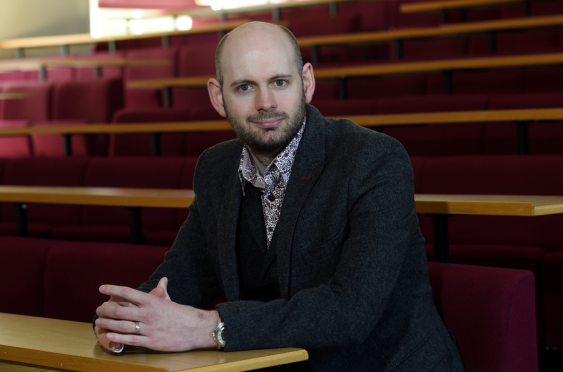The party poppers have been popped, the drams sunk, the bells rung, and bleary eyes rubbed in an attempt to focus on what’s coming.
Is 2020 a fresh start or more of the same in our political world?
The answer is difficult to say with any certainty. The comfortable majority secured by Boris Johnson’s Conservatives in the snap December election suggests that we will probably be spared a further mass electoral event this year – that is, no UK general election. And with the Scottish Parliament election scheduled for May 2021, and SNP-Conservative posturing on a second independence referendum unlikely to lead to agreement, the likelihood of a 2020 referendum also appears to have receded. So, a quieter year then? Don’t bet on it.
Locally, at least, we’re likely to see some council by-elections. In the December election, the SNP group leaders in both Aberdeen City (Stephen Flynn) and Aberdeenshire (Richard Thomson) were elected as MPs in Aberdeen South and Gordon respectively. Angus constituency also elected a councillor from neighbouring Perth & Kinross (Dave Doogan). While there are no rules stopping councillors also serving at other levels – and indeed, two current Aberdeen City councillors, Tom Mason (MSP) and Christian Allard (MEP) do just that – it is likely that at least one will decide to relinquish their council responsibilities, triggering a by-election. Add to this the recent conviction of Councillor Alan Donnelly and it makes for an uncertain future for the city council.
Beyond potential by-elections, parties are unlikely to take themselves off an election-footing just yet. The Holyrood election might be 16 months away but we’re already into the long campaign. The SNP, who have governed Scotland since 2007, will defend their record on devolved issues – health, education, transport – while continuing to press their case not just for further autonomy but for independence. The opposition parties at Holyrood will use the long campaign to build their claims as a government-in-waiting – something they have had limited success in doing over the past decade.
It would appear likely that the constitutional question will continue to dominate. Before Christmas, the First Minister wrote to the Prime Minister outlining her case for powers to be transferred to the Scottish Parliament to hold a second independence referendum. The Prime Minister made clear he was unlikely to countenance such a move. Whether he agrees to the request or not, the issue will remain on the agenda at least through the 2021 Holyrood election. In last month’s UK election, the SNP returned 48 of the 59 seats, and were second in the remaining 11. The contest here has largely – with notable exceptions – become an SNP v Conservative battle, with pro-independence and pro-Union support coalescing around these parties. This pattern appears likely to continue through to the 2021 election.
The other constitutional issue – Brexit – appears to be all but resolved. The Conservative majority secured in December allowed the Prime Minister to bring his Withdrawal Bill back to the House of Commons with much more confidence that it would be supported by MPs. A second reading on 20 December agreed the general principles of the bill, while a three-day debate next week to pass the final version of it is likely to be a formality, passing it into law before the UK officially leaves the EU on 31 January. Transition arrangements will remain in place until the end of the year, but by and large, the Prime Minister will shortly achieve his ambition to ‘get Brexit done’.
In that regard, UK politics will largely move on from the Brexit debate – onto what? Given the focus of the election was Brexit, we must look to the Queen’s Speech for clues on this. Funding for the NHS, a ‘points-based immigration system’, net zero greenhouse gas emissions by 2050 and the repeal of the Fixed-term Parliaments Act were all given time. There were also pledges for England and Wales only: the removal of hospital parking charges and the reduction of business rates – issues the Scottish Parliament have already made provision for.
But while UK politics moves on from a divisive election, Scottish politics begins to gear up for another. And, once again, the fate of the Union appears to be at stake. The SNP will bang the drum forcefully for independence, the Conservatives will defend the Union. Labour, the Liberal Democrats and the Scottish Greens will likely be squeezed by the constitutional focus, though Labour in particular appear to be re-assessing where they stand on the constitutional question – or, at the very least, where they stand on a second referendum. Much of the debate has been had before – in 2014, and many times since. But with the impending resolution of the Brexit question, we’ll see some variation in the argument.
The more things change, the more things stay the same.
Dr Malcolm Harvey is a lecturer in politics at the University of Aberdeen and an Associate Fellow of the Centre on Constitutional Change.
